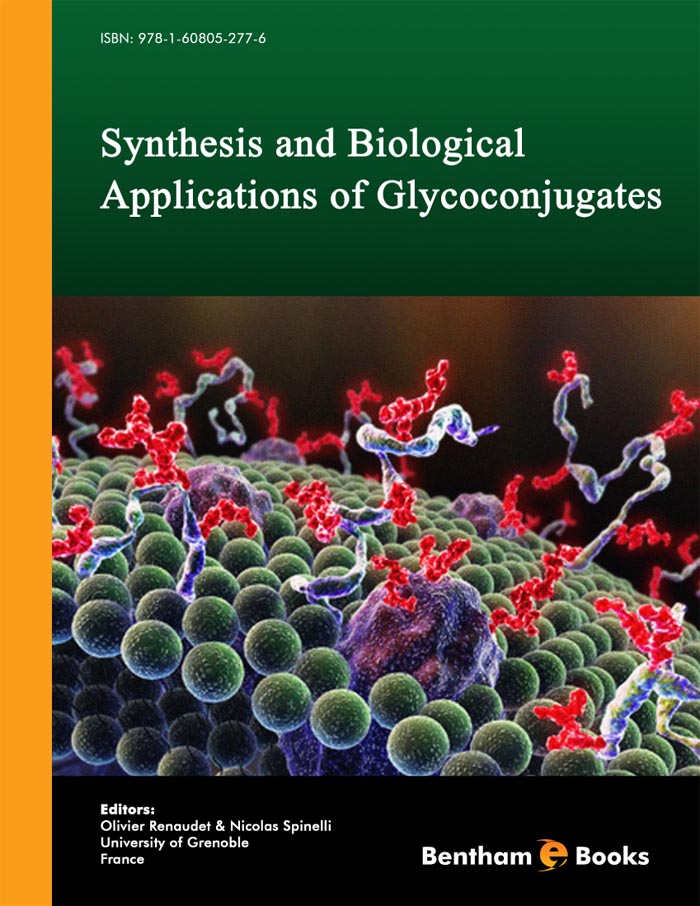Preface
The interactions between carbohydrates and proteins are involved in major physiological and pathological events. With the recent emergence of glycomics, an increasing number of sophisticated glycosylated structures capable of mimicking the multivalent display of the cell surface glycocalix has been reported. Besides giving precious guidelines on the binding parameters that govern these complex biological processes, synthetic glycoconjugates often revealed considerable interests for diagnostic and therapeutic applications.
Our main motivation to edit Synthesis and biological applications of glycoconjugates was to update the major advancements in this field through several chapters written by renowned experts who have largely contributed to the recent progresses. Illustrated with more than 200 colour figures and including literature citations mostly from the last decade, this book covers the recent chemical methods of glycoconjugates and clearly highlights their diverse biological properties. Chapter 1 analyzes the structure of lectins from pathogenic bacteria and gives structure/function relationships that are crucial for the development of high affinity ligands. In Chapter 2 carbohydrate binding by FimH is discussed and modern means for its investigation including photoaffinity labelling are described. Very recent crystallographic work is also documented that provides an explanation for shear-enhanced binding of type 1 fimbriated E. coli. Chapter 3 summarizes the most convenient methodologies for the synthesis of glycocalixarenes and describes their impressive aggregation properties and many other biological applications. Chapter 4 illustrates examples of bacterial and human lectins together with bacterial toxins having varied number of carbohydrate recognition domains that necessitated multivalent glycoconjugates. It focuses on glycofullerenes that have been used to describe novel synthetic strategies and possible fit with concomitant lectins. In Chapter 5 the structures of the cholera and E. coli heat-labile toxins are described. The authors also summarize the main strategies that have led to the development of monovalent and multivalent inhibitors of these toxins and they discuss the importance of chelation and protein aggregation as mechanisms of multivalent inhibition. Chapter 6 focuses on the design of high affinity ligands for galectins and provides a better knowledge of the implications of these proteins in biology. Chapter 7 demonstrates that combinatorial chemistry led to the discovery of glycopeptide dendrimers as strong ligands for lectins or drug-delivery systems and shows how the amino acid composition of the dendrimer branches can influence their biological activity. Chapter 8 focuses on the synthesis of a recent class of glycoclusters displayed on a cyclopeptide platform and highlights their promising biological properties, in particular as inhibitors or synthetic vaccines. Chapter 9 shows that the cellular delivery and bioavailability of oligonucleotides can be improved by their conjugation with carbohydrates and also describes the construction of carbohydrate biochips or glycoclusters using these conjugates. Chapter 10 focuses on glycoliposomes and covalently-functionalized glyconanoparticles which make use of the “glyco-code” to address specifically pathogens or pathological-related problems. Chapter 11 focuses on the synthesis of glycoproteins, glycopeptides, glycosylated natural compounds, carbohydrate-functionalized surfaces and nanoparticles using chemoselective glycosylation. In Chapter 12 the recent developments in glycosidase-catalyzed synthesis of unnatural semi-synthetic carbohydrate structures are presented. Chapter 13 reports the synthesis of glycomimetics and glycopeptidomimetics using hetero-Diels Alder reactions between α,α'-dioxothiones and glycals. Chapter 14 aims at describing the usual methods to characterize protein-carbohydrate interactions, namely inhibition of hemagglutination assay, enzyme-linked lectin assays, isothermal titration calorimetry, surface plasmon resonance and the more recent atomic force microscopy.
We believe that this Ebook will be of particular interest to a large community of graduate students, researchers and professionals in academia or industry involved in Glycoscience. We would like to express our sincerest gratitude to all of the authors who accepted to contribute to this exciting project, by sharing their strong experiences and knowledge in this research area.
Olivier Renaudet
Nicolas Spinelli
University of Grenoble
France

